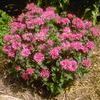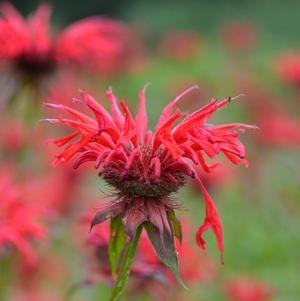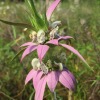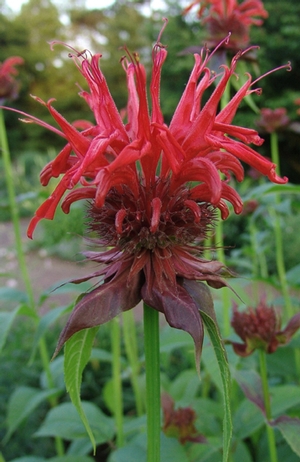
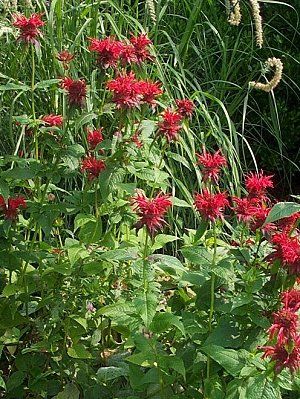
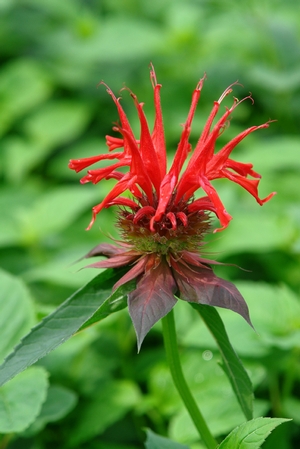



Plant Calculator
Enter the approximate length and width of the area you will be planting and click 'Calculate' to determine how many Monarda didyma 'Jacob Cline' you will need.
Correct and successful spacing is complex and depends on project conditions. We encourage you to call us at 877-ECO-PLUG for project specific recommendations and further assistance.
Monarda didyma 'Jacob Cline'
beebalm
- Category: Perennial, Native
- Hardiness Zone: 3-8
- Height: 3-5 Feet
- Spread: 2 Feet
- Spacing: 12-24 Inches
- Bloom Color: Red
Named for the son of Georgia plantsman and garden designer Jean Cline. This is the ticket as far as mildew resistant Monardas. Wonderfully aromatic foliage and stems with enormous red tubular flowers from June to August. A Saul Nursery introduction. Cherished by butterflies and hummingbirds. Also makes an excellent cut flower!
Click here to download technical information for growers:
Wetland Indicator Status
| • | Falcutative (FAC) |
Propagation Type
| • | Vegetative |
Additional Information about Monarda didyma 'Jacob Cline'
This drop-dead red variety was found growing wild near the Blue Ridge Parkway by a Georgia plantsman who knew he had a good thing when his discovery proved to be quite the powdery mildew resistant strain. With its wonderfully aromatic foliage, typical mint family square stems, and enormous red tubular flowers, Monarda ‘Jacob Cline’ is a show stopper as it blooms from late June to August. Growing 3-4’ tall and 2’+ wide, ‘Jacob Cline’ is named after the discoverer’s son and the garden designer, Jean Cline, and was introduced to the trade by Saul Nursery.
Monarda didyma grows in full sun in wet meadows, moist open woods, woodland borders, thickets and disturbed sites. The plants require average to moist soil with good drainage. Originally found from Quebec to Maine to Georgia to Minnesota and Missouri. It is most densely found in montane habitats following the Appalachian Mountain range from Maine to Pennsylvania to northern Georgia. The straight species is an aggressive grower once it is settled into the garden and should be placed in an area where it may be free to roam or is held in check by other perennials with strong roots.
The bright red flower is a favorite among hummingbirds and long-tongued bees but watch carefully! Short-tongued bees access the long tubular flower by cutting right into the throat and drinking the nectar without pollinating the flower. Beebalm is a great plant for the wildlife garden, cottage garden, and in a naturalized garden where the plant can grow into a mass of blooms. Particularly wonderful when planted near a spot where one can observe its flowers, not just for the beautiful blossoms but also the wildlife attraction and how the seedheads dance in the early morning light after a frost. Monarda is deer and rabbit resistant.
Growing & Maintenance Tips for Monarda didyma 'Jacob Cline'
Grow in full sun and average to moist soil with good drainage. Water well on planting and regularly until established. Drought tolerant and mildew resistant.

